Special Operation Forces (Jordan)
The King Abdullah ll Special Forces Group of the Jordanian Armed Forces serve as Jordan's premiere special forces unit. Founded on April 15, 1963, on the orders of the late King Hussein, its primary roles include reconnaissance, counter-terrorism, search and evacuation, intelligence gathering combat, and the protection of key sites. The Special Forces Group are also charged with carrying out precision strikes against critical enemy targets. The 1000-strong unit[1] is equipped and trained to be able to operate behind enemy lines for long periods without any logistical support, and is considered one of the finest special forces units in the world.[2]
| Directorate of Special Operations and Rapid Intervention | |
|---|---|
| لواء التدخل السريع (عالي الجاهزية) | |
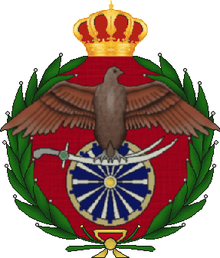 Emblem of the Special Operations and Rapid Intervention Directorate | |
| Active | 1963 – 2017 (JSOC) 2017 - 2018 (SFG) 2018 - Present (SOF) |
| Country | Jordan |
| Branch | Jordanian Armed Forces |
| Type | Special operation |
| Size | N/A |
| Garrison/HQ | Amman |
| Nickname(s) | Al-Khassa Red Berets |
Special Forces Development
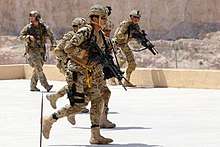
Since its establishment in 1963, the Jordanian special operations forces were meant to be flexible and dynamic, in order to successfully face the ever-changing threats to Jordan national security. Their organizational structure has evolved significantly over the past half-century, as internal and external threats changed.
Jordanian special operations forces evolved from a multi-task company-size parachute unit in the early 1960s to brigade-size in the early 1980s, with more specialized units, including a parachute unit, special forces unit and a small counter-terrorism unit.
With the beginning of this century and the emergence of new threats to national security, Jordan established paramilitary troops—the Gendarmerie. The new military force was, and remains, tasked with countering homeland security threats, thus allowing the Special Operations Forces to focus on homeland defense threats. Therefore, the concept changed accordingly, from special operations to joint special operations.
The previous organization of the Royal Joint Special Operations consisted mainly of three main brigades with all standard support and service units that facilitate operations and training.
- The Special Forces Brigade consists of a special forces group, a counter-terrorism battalion, and a combat search-and-rescue battalion. This brigade is mainly equipped and trained to successfully fight unconventional threats, with a good capability to also face conventional ones.
- The Rangers Brigade is more geared towards fighting conventional threats, with good capabilities to support internal security operations.
- The Special Operations Aviation Brigade provides the joint task forces with mobility, timely response capabilities, and insertion platforms, especially for the counter-terrorism teams.
Special Operations 2017 Reform
In the summer of 2017, the new chairman of the Joint Chiefs of Staff of JAF, Lieutenant General Mahmoud Freihat, launched a package of reforms across JAF—many of which appear to be driven by budgetary constraints. The reforms included specific initiatives that have significantly changed the shape of the Jordanian special operations community.
The first measure deactivated the Joint Special Operations Command headquarters and downgraded the highest-ranking special forces commander from a major general to a colonel-rank officer.
The second measure transformed the 28th Royal Ranger Brigade out of special operations and re-organized it as the Rapid Intervention / High Readiness Brigade
The third initiative removed the 5th Aviation Brigade from special operations and transferred it to the Jordanian air force. The brigade has been supported by the U.S. 160th Special Operations Aviation Regiment, which carries out quarterly reviews of their Jordanian counterparts. The level of U.S. oversight and support for this brigade has made it one of the most effective elements of the Jordanian armed forces. While the brigade’s aircraft and pilots now fall under air force control, It has been assigned a direct support role to the King Abdallah ll Special Forces Group.
The result of reforms is to condense a three-brigade Joint Special Operations Command down to a single army-specific group—known as the King Abdullah II Royal Special Operation Forces Group—with most support elements, including administration and logistics, stripped away. At the heart of the new group are the 101st and the 71st battalions, which were converted into Special Unit I—special operations—and Special Unit II—counterterrorism.[3]
The fourth initiative has seen the creation of the Directorate of Special Operations and Rapid Intervention. This new directorate, which forms part of the general staff of the army, is in charge of the King Abdallah ll Special Operations Group and the Rapid Intervention / High Readiness Brigade.
JSOC Objectives before the reform
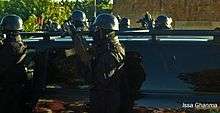
The Jordanian JSOC tasks before the reform in 2017, the reform which will clarify the objectives of the Jordanian special forces and articulate a vision for the role of special forces in future counter-terrorism operations.
Tactical Tasks:
- Occupying airborne bridge-head to assist ground forces.
- Conducting raids on enemy HQs, artillery sites, missile sites, roads and any other significant key targets.
- Airborne and air assault operations.
- Armor hunting.
- Strategic reconnaissance missions.
- Organizing, training and developing guerrilla forces.
- Operating behind enemy lines.
- Assaulting captive cells and freeing POWs.
- Urban area operations.
- Readiness to assist any Arab brethren countries upon request.
- Search and rescue operation.
Security Tasks:
- Counter terrorism operations.
- Counter infiltration and smuggling.
- Internal security operations.
Training Tasks :
- Provide rangers and paratrooper training to JAF units.
- Provide officers and NCO's from Arab countries with special operations and ranger courses.
- Train public security and customs department officers.
- Participate in training courses held in Arab countries.
Strategic Tasks:
- Participate in UN missions.
- Assist in training friendly forces.
- Evacuation operations in time of disasters.
Directorate of Special Operations and Rapid Intervention Structure
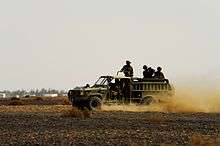
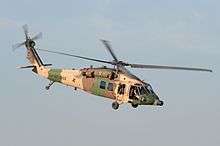
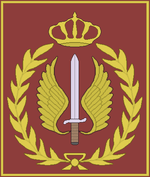
- Group HQ
- 71st Special Battalion — Counter-Terrorism
- Unit Objectives: Counter-terrorism and Urban Warfare
- 101st Special Battalion — Special Operations
- Unit Objectives: Special Reconnaissance, Direct Action, Tunnel Warfare, Humanitarian Assistance and Combat Search and Rescue.
- Group Defense & Protection Battalion
- Group Training and Development Center
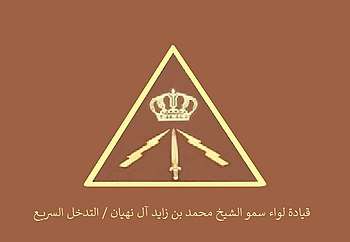
- Brigade HQ
- 61st Rapid Intervention Battalion (Raiders)
- Specialized in Direct Action, Mountain Warfare, CSAR, Special Reconnaissance.
- 81st Rapid Intervention Battalion
- Specialized in Direct Action, Jungle Warfare, Airborne & Air-assault Operations.
- 91st Rapid Intervention Battalion
- Specialized in Direct Action, Desert Warfare, Airborne & Air-assault Operations.
- 8th Squadron (UH-60M Blackhawk) - Attached from RJAF.
- Supporting Arms Virtual Trainer (SAVT) Center
- Designed to train JTAC’s.
- Special Engineering Company
- Brigade Training Center
- Prince Hashim School for Special Operations
The Special Forces Group is supported by the Rapid Intervention / High Readiness Brigade which was formed in 2014.
There are Similar Units to the Special Operations Units like the Special Gendarmerie's Unit 14 (SWAT unit) & Special Police's Unit 30 (SWAT unit) . With the need for surrounding countries to develop modern forces, Jordan has become a centre of experience and specialized training for special forces. Jordan has trained to meet the needs of Arab and non-Arab countries. As an established regional centre for special forces training, Jordan has trained forces from Algeria, Bahrain, Iraq, Kuwait, Lebanon, Libya, Morocco, Oman, Qatar, Saudi Arabia, the UAE and Yemen.
KASOTC
The King Abdullah II Special Operations Training Center (KASOTC) is indeed a one-of-a-kind facility in the region. It was conceived to be a training hub for elite forces, law enforcement, and counter-terrorism operators not only in the region but worldwide. KASOTC offers trainees a unique opportunity to gain experience and knowledge and to interact with similar forces from other countries, which will create a pool of highly qualified professionals who can meet the challenges of cross-border threats.
The center’s instructors come from all over the world and were carefully selected in light of their very strong qualifications and solid experience, which is a tremendous asset to all those who participate in training at KASOTC.
KASOTC derives extraordinary success from this unique combination of elite instructors and advanced technology. When knowledge is combined with experience, a maximizing effect occurs to skills obtained, making the KASOTC experience unique to all other training facilities. It is the only reality-based, live-fire training facility of this kind in the world. Operated as a commercial enterprise, it is uniquely integrated with the Jordanian Armed Forces. This relationship is a bold innovation; providing access to military equipment and support that expands all training horizons.
Located north of Amman, Jordan in an old rock quarry, the twenty-five (25) square kilometer facility is safe, secure, and isolated. It is equipped with multiple distance ranges; from a 1300-meter unknown distance range to a 300-meter, moving target range to accommodate most firearm requirements. It has a four-story, close-quarters battle (CQB), live-fire structure and the largest mock city in existence, 67 buildings, which include numerous arrangements from an Afghan village to an embassy. Special battlefield effects, live-fire compatible throughout, with a fiber-optic network connecting the Range Operations Control Center (ROC) to the hundreds of cameras, microphones, target systems, and simulators make testing the user's creativity in tactics, techniques, and procedures a reality. Together with on-site lodging, dining, gym, pro-shop, weapons/equipment rental, and storage; people can easily see why KASOTC is the ideal place to do what in necessary to prepare forces for the challenges of 21st-century armed conflict.
Prince Hashem School for Special Operations
Mission
To train and qualify officers and NCOs from JAF, Arab and Friendly countries on RNG/ARBN and Special Operations.
School History
The school went through the following key phases in terms of organization and development
- in 1963 The first ranger and airborne course was trained by American training team and Ranger and Airborne training wing was established in infantry school.
- In 1970 Ranger and Airborne training wing was established in RSF.
- In 1979 Special forces school was formed and continued to evolve until 1983, where four were formed.
- In 1983 Four training wings (ranger, airborne, specialization and field) were established.
- In 1995 The organization was advanced with a new battalions system and free fall center was added.
- On 1 October 1996 the name has been modified and was called "Joint Special Operations School."
- On 24/12/2001 special operations school was renamed Prince Hashem bin Al Hussein School for Special Operations.
- In 2017, the school transferred from special forces to Army Training Command.
School Goals and Duties
- The preparation and training of special operations officers on Common functions.
- The preparation and training of joint special operations commissioned officers.
- The preparation and training of juvenile soldiers basic training and specialist training.
- The preparation and training of members of the armed forces through special training.
- Training of Public security, civil defense, customs and General Intelligence personnel.
- Training members of friendly States on rangers and paratroopers and other special forces works.
- The training of graduates of University officers (field) in addition to the pupils and candidates from Mutah University on rangers and paratroopers.
- Participate in the testing of new weapons and gear mechanisms and sufficiency of Joint special operations duties.
- Conduct annual tests for units and formations Joint special operations and the armed forces.
School Courses
- Platoon Commander’s Basic Tactics Course
- English Language Training Course For Officers/NCO
- Ranger Course
- Ranger and Airborne Instruction Course
- Airborne Course
- Air Assault Course
- Fighting In Built Up Areas and Internal Security
- Hand To Hand Fighting (Sejal)
- Marksmanship and Range Management Course
- Special Operations Selection Course (officers and other ranks)
- Section and Group Commanders
- Packing And Parachute Maintenance
- Free Fall Course
- Jump Masters Course
- Pathfinders Course
- Airborne Infiltration Course
- Strategic Reconnaissance Course
SOF Recruiting
Enrollment in the Jordan armed forces is on a voluntary basis, and this is obviously also true for the special operations. The first requirement for those willing to join the special operations is that they should successfully pass physical and mental fitness tests.
From a psychological point of view, applicants are evaluated by a military psychologist in order to assess their personal and leadership traits. Then, applicants undergo a medical screening and an initial PT test. Those who make it through this preliminary selection phase are admitted to an endurance camp (boot camp) for a month of extensive training. The camp is designed to test trainees’ ability to work under physical and mental stress.
Upon completing the camp, recruits take ranger and parachute courses. After this second phase, they are sent to specialized courses to complete their military professional training.
Training Courses
| Course | Period | |
|---|---|---|
| Basic Ranger Course | 10 weeks | Basic Ranger Course is the basic course obtained by all Special Operations personnel, Focus on fitness and high individual skills and the ability to endure different difficulties and different areas of training. |
| Parachute Course | 4 weeks | The Parachute Course is the 2nd basic course held after the Basic Ranger Course for all Special Operations personnel. Aimed at strengthening the self-confidence of special operations soldiers and parachute jumping skills. |
| Jump Master Course | 2 weeks | Is one of the most important specialist courses for the air operations unit to sustain operations of Parachuting, air supply and how to deal with the Air Force. |
| Parachute Fold & Maintenance Course | 6 weeks | This Course is one of the most important courses in order to qualify for special air operations units on how to maintain and fold parachutes to reach the maximum degree of possible safety and security. |
| Load and Air Transport Course | 3 weeks | This course is held to train specialists in the preparation and processing of loading either individuals, vehicles and their equipment onto transport planes, helicopters, as well as transporting companies/battalions or Brigade sized units so that there is an equal distribution of responsibilities for the completion of the work required. |
| Free Jump Course | 6 weeks | The Free Jump course is one of the most important professional class courses to train Parachute Free Jumping (Tactical/Training), each trainee performs an average of 25 Free Jumps except the training jumps. |
| Parachute Landing (Pathfinder) Course | 3 weeks | This course trains participants in how to deal with winged or vertical aircraft and how to provide guidance and Air control, and also how to set up and operate drop zones, pickup zones, and helicopter landing sites for airborne operations, air resupply operations, or other air operations in support of the ground unit commander. |
| Navigation Course | 4 weeks | Training of officers and NCOs to read maps and aerial photos, navigation, installation, and also training to use encrypted maps as well as training on the use of GPS devices and other special devices. |
| Urban Warfare & Internal Security Course | 8 weeks | This course trains officers and NCOs and other ranks on the methods, skills, planning, and execution processes of defense and attack on Urban areas. As well as further training in planning and execution of tasks that contribute to the maintenance, control, and stability of Homeland Security. |
| Special Forces Course | 13 weeks | Preparation and rehabilitation officers and NCO of special forces operations in conditions of conventional and non-conventional war. This course is one of the most important professional class. |
| Tae-kwon-do Course | 24 weeks | Training of officers and NCO to free martial arts and self-defense skills and styles used in this session to develop physical abilities of participants and hone their skills to be helpful to them in the implementation of the obligations and duties of self-defense And the situations that require the imposition of a certain reality without the use of arms. As well as representation of armed forces in Taekwon-do game. |
| Brazilian jiu-jitsu Course | 24 weeks | Brazilian jiu-jitsu is a martial art, combat sport, and a self-defense system that focuses on grappling and especially ground fighting and using the combat punch, kick by the elbow, knee, head, hand and fingers in addition to clashes that rely on break or bend the joints of the body and ground fighting techniques and submission holds involving joint-locks and choke-holds. |
| Basic Skills Course | 6 weeks | Training of officers and NCO in special operations to use the terrain better use and how to utilize camouflage, fire and movement techniques, and development of individual and physical abilities and some special operations.
This is one of the Basic courses for the special operations personnel |
| Sijal & control stick Course | 8 weeks | The Sijal is a Jordanian self-defense style similar to Krav Maga. The preparation and training of officers and NCO in identifying weak points in the human body or to exploit them for protection as well as training and martial arts and self-defense using body parts only or using other tools and equipment such as: (Normal and regular police stick and bayonet, knives and other edged weapons) |
| Air Insertion Course | 4 weeks | Rehabilitation officers and NCO in special operations to execute rapid intrusions of hostile targets using winged aircraft or helicopters to transport the troops to the nearest point of the goal as quickly as possible to execute the duty and pick up after execution of the operation and the protection and attribution of helicopter gunships. |
| Explosives & Adverse actions Course | 3 weeks | Training of officers and NCO on how to handle explosives and various explosive extras and how to prepare fillings and booby-traps and packages and adverse actions, and also training on how to deal with Blind bombs. |
Equipment
Small Arms
- HK416 A5 - 5.56×45mm assault rifle
- HK417 - 7.62×51mm Battle rifle.
- Heckler & Koch G36 - 5.56×45mm assault rifle, the Jordanian Special Operations Forces employ the G36C.[4]
- M4A1 Carbine - 5.56×45mm assault rifle
- Heckler & Koch UMP - 9×19mm Submachine gun
- Heckler & Koch MP7 - 4.6×30mm Submachine gun
- Barrett M82A1 - 12.7×99mm sniper rifle
- Barrett M95 - 12.7×99mm sniper rifle
- McMillan Tac-50 - 12.7×99mm sniper rifle
- L115A3 - .338 Lapua Magnum sniper rifle
- Sako TRG-42 - .338 Lapua Magnum sniper rifle
- DPMS LR308 - 7.62×51mm sniper rifle
- Benelli M4 - Shotgun
Support Weapons
- Minimi - 5.56×45mm light machine gun
- FN MAG - 7.62×51mm machine gun
- M240 machine gun - 7.62×51mm machine gun
- M60E3 Machine Gun - 7.62×51mm machine gun
- Browning M2HB - 12.7×99mm machine gun
- Milkor MGL - 40mm grenade grenade launcher
- M203 - 40mm grenade grenade launcher
- Mk 19 grenade launcher - 40mm grenade grenade launcher
- Heckler & Koch GMG - 40mm grenade grenade launcher
- FGM-148 Javelin - Fire-and-forget Anti-tank missile
- RPG-32 Nashab - Anti-tank Grenade launcher
- M224 mortar - Mortar
Optical and Electronics Equipment
- AN/TVS-5 - Crewed Night Sight
- AN/PVS-7D - Night Vision Goggles
- AN/PVS-9 - Night Vision Goggles
- AN/PVS-14 - Monocular Night Vision Device
- AN/PVS-22 - Universal Night Sight
- AN/PVS-23 - Binocular Night Vision Goggles
- AN/PVS-27 - Magnum Universal Night Sight
- Schmidt & Bender 3-12x50 PM II - Telescopic sight
- Schmidt & Bender 5-25x56 PM II - Telescopic sight
- Leica CRF-1200 - Laser rangefinder
- Vectronix PLRF - Laser rangefinder
Transport
- ATK AC-295M - Gunship Aircraft modified by ATK
- ATK AC-235 - Gunship Aircraft modified by ATK
- UH-60L Black Hawk - Utility helicopter
- MD 530F - Light multi-role helicopter
- Cougar HE 6x6 - MRAP
- RG-33L 6x6 - MRAP
- International MaxxPro - MRAP
- HMMWV - Light Utility Vehicle
- Al-Tha’lab (Fox) - Long Range Patrol Vehicle
- LTATV - All-terrain vehicle
- Family of Medium Tactical Vehicles
Uniforms and insignia
Uniforms
Special Forces Group wear MultiCam, Maroon berets. Some Special Unit II teams wear Full Black Pattern.
Insignia

King Abdullah II Special Forces Group Insignia

Rapid Intervention / High Readiness Brigade Insignia
References
- Lang, Hardin; Wechsler, William; Awadallah, Alia. "The Future of U.S.-Jordanian Counterterrorism Cooperation". Center for American Progress.
- Bender, Jeremy (February 4, 2015). "Jordan's special forces are some of the best in the Middle East". Business Insider. Retrieved 27 April 2016.
- Hardin Lang, William Wechsler, and Alia Awadallah (November 30, 2017). "The Future of U.S.-Jordanian Counterterrorism Cooperation". Center for American Progress. Retrieved 25 May 2018.CS1 maint: uses authors parameter (link)
- Shea, Dan (Spring 2009). "SOFEX 2008". Small Arms Defense Journal, p. 29.